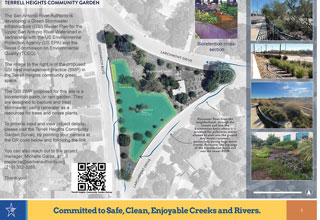San Antonio River Authority Develops Green Stormwater Infrastructure Plan (Source: Stormwater Solutions)
In 2019, the San Antonio River Authority (River Authority) was awarded a Clean Water Act Section 319(h) Grant by the U.S. Environmental Protection Agency, administered by the Texas Commission on Environmental Quality (TCEQ), to develop a master plan for the use of green storm water infrastructure (GSI). This three-year grant project builds off recommendations made in the Upper San Antonio River (USAR) Watershed Protection Plan to implement GSI to reduce storm water runoff pollution and addresses measures in the Texas Non-Point Source Management Program.
In the past, most storm water infrastructure was designed to manage storm water volume and address flooding issues with little or no focus on managing storm water quality. However, urbanization of a watershed not only increases storm water runoff resulting in flooding concerns, but also increases pollutant loads resulting in degraded water quality that impacts aquatic life as well as water supply and recreation.
GSI are constructed features that add the storm water quality component to storm water infrastructure by mimicking the predevelopment hydrology of a drainage area and reduce pollutant loads. Example GSI features evaluated in this project include bioretention basins, bioswales and extended detention basins. They are designed to reduce storm water loads by capturing and treating a portion of storm water runoff pollution and therefore reducing the loads entering local creeks and rivers.
With GSI being relatively new to the San Antonio River Basin, the River Authority worked with Lockwood, Andrews & Newnam, Inc. (LAN), a national planning, engineering and program management firm, on modeling potential GSI to evaluate their performance in reducing pollutant loads. The results support the River Authority’s Master Plan development that aims to guide decision-makers on where and how to apply limited resources in the upcoming years to maximize water quality benefits while addressing local flooding concerns.
CLICK HERE TO READ COMPLETE STORY

